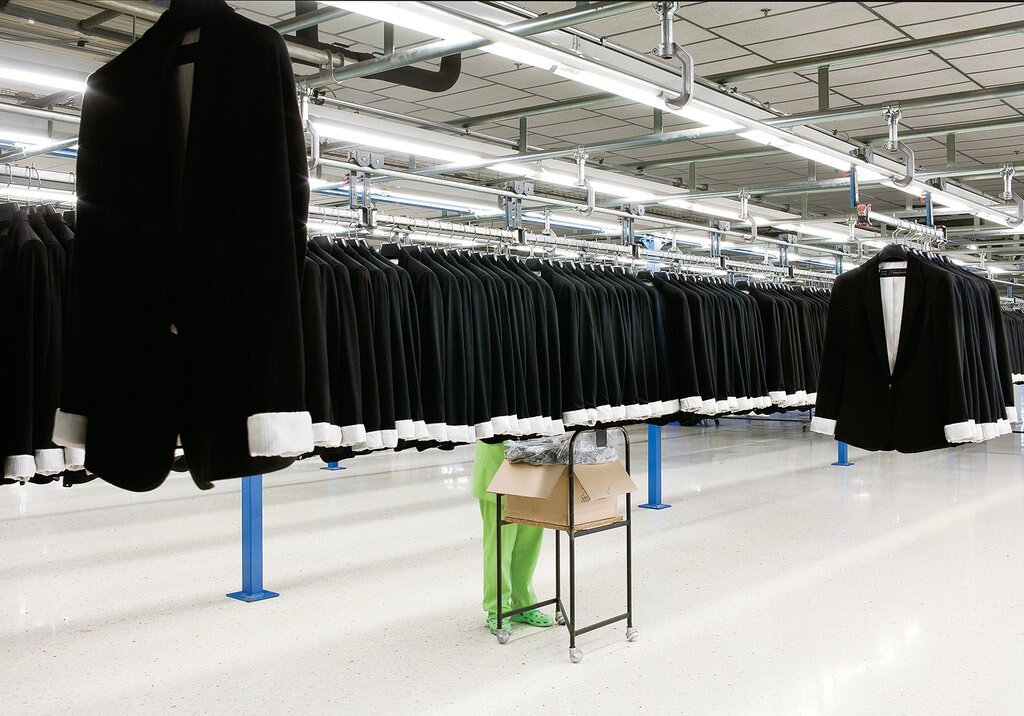The Contradiction of Eco-Friendly Fast Fashion

As global concern for the environment has risen, conservationists have been shifting attention to fashion. The fashion industry is now one of the largest sources of excess waste in the world. The rise of fast fashion, with retailers like H&M and Forever 21, has created a cycle of constantly buying new clothes and throwing away old clothes just as quickly.
Due to the fast fashion phenomenon, the world consumes 80 billion pieces of clothing annually, a 400% increase since 1999. Along with this massive rise in clothing production, our garment waste has also grown exponentially. According to World Resources Institute, one garbage truck of clothes is burned or landfilled every second. Clothing manufacturing also uses an exorbitant amount of natural resources, needing as much as 2,700 liters of water to make a single cotton shirt. With the fashion industry quickly advancing towards fast fashion, more and more people are wary of brands that help propagate the propulsion towards an unsustainable cycle of rapid consumerism, disposal, and dangerous environmental implications.
H&M and Zara, popular brands known for their continuous release of on-trend designs at a reasonable price, have taken most of the heat for the push back against fast fashion. In order to combat these claims, Zara , specifically, has established a sustainability initiative. Their strategy sparked headlines by claiming to eliminate their landfill input completely by 2025. The multi-billion dollar company also is planning to completely transition to sustainable fabrics by removing single use plastics in their stores and clothing. In addition, donation bins will be installed in all their stores to reduce the amount of people disposing of clothing and instead, donating them. This already builds on previous moves by the business to incorporate recycled fabrics, which are used in their Join Life collection that accounts for 20% of their business. Overall, these monumental goals will drastically reduce their energy and resource consumption over the next decade, hopefully reversing the negative effects their quick production cycle has on the environment.
Although Zara’s strides towards conservationism and eco-friendly fast fashion appear to counteract their mass production business model, many critics are still skeptical about the true effectiveness that these initiatives will actually have on the production line. Zara currently releases 500 new designs a week and can transition designs from ideas to items being sold in stores within a week. Most competitors need about 40 weeks to make that same transition. This quick turnaround often depends on a much larger use of resources to keep up with trends and demand, as well as a quicker timeline for store disposal to open up space for new product. The current eco-friendly initiative does not account for any decrease in production or lengthening of their release timeline. Plainly, Zara will continue to release 20,000 designs a year, eliminating plastics and non-sustainable fabrics. However, the underlying problem of the increased amount of product being consumed, whether it’s being recycled or thrown away, is not being solved.
It is undeniable the move towards sustainable fabrics, the reduction of hazardous chemicals in production, and the elimination of plastics and landfill waste will reduce fast fashion’s major contribution to harmful global waste. Yet it is impossible for the world to see any substantial difference without a change in the culture of buying tossable, cheap clothes. If fast-fashion continues growing at the same pace, we will be running rapidly towards a widespread crisis.




